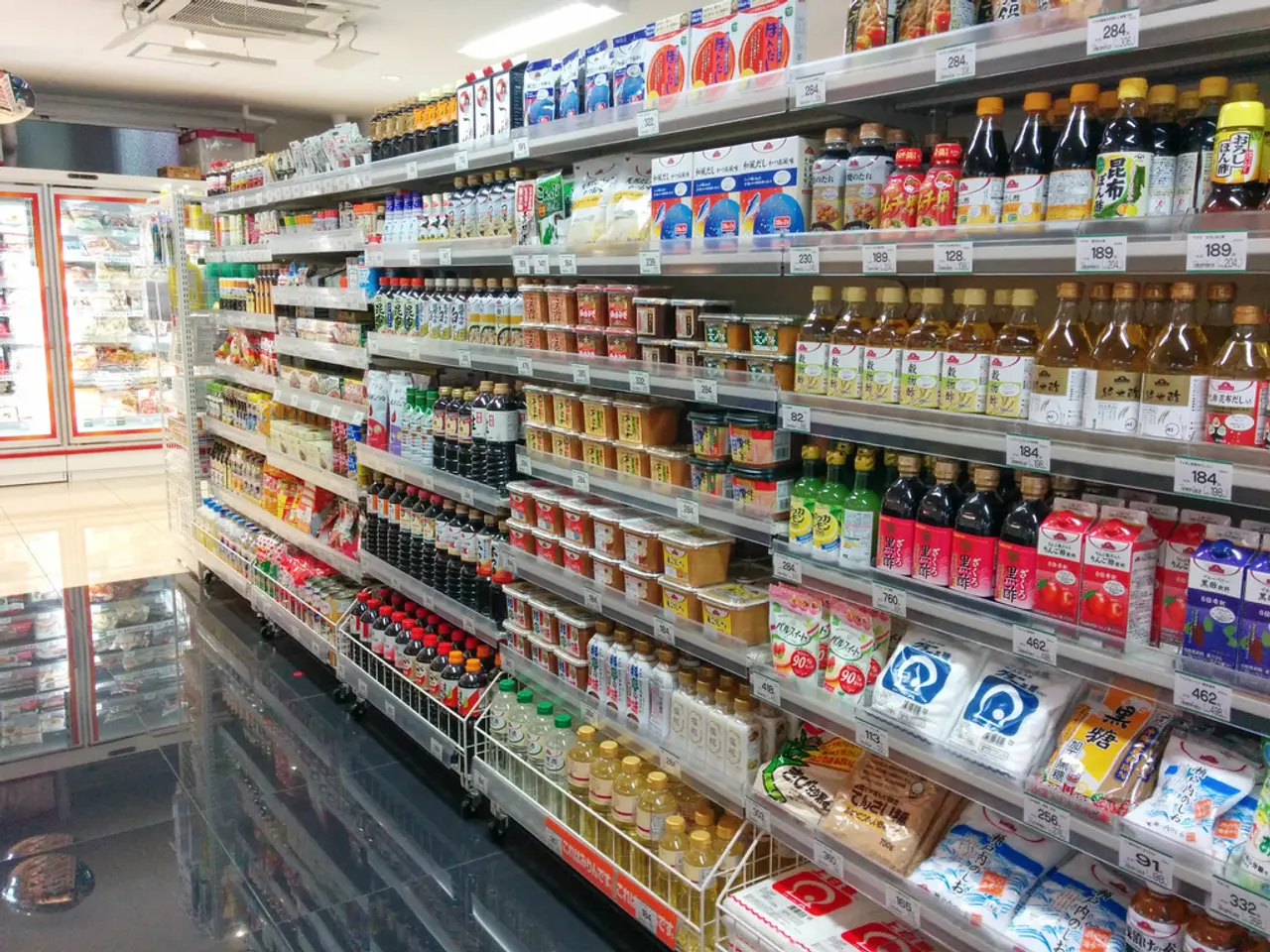Tesco slashes costs through efficient supply chain data analysis
Tesco's Supply Chain Analytics Revolution
Tesco, one of the UK's largest retailers, has made significant strides in optimising its supply chain operations, resulting in substantial cost savings and improved customer service.
A key factor in Tesco's success is the full-scale rollout of RFID (radio frequency identification) technology across its stores and distribution centres. This strategy provides real-time product visibility from factory to store, enabling better supply chain management, increased product availability, and reduced operational costs.
Tesco has deployed around 4,000 RFID readers and 16,000 antennae in 1,300 stores and 35 distribution centres. This technology allows for more accurate and secure tracking of goods during loading, unloading, and at merchandise receipt points.
The pilot project, which paved the way for the full rollout, was a success. It allowed Tesco to refine the system before scaling it up, ensuring tangible improvements in supply chain operations.
Enhanced product visibility is another benefit of RFID tagging on pallets and reusable container products. This monitoring reduces losses, out-of-stocks, and improves replenishment speed.
Tesco's supply chain analytics team is mainly staffed by science and engineering graduates, trained in retail expertise and SQL programming skills. They have made significant contributions to the company's efficiency and cost reduction.
One of their key projects involved the development of a predictive model using historical promotion data. This model takes into account variables such as product positioning and concurrent offers. It has been instrumental in saving the company millions of pounds.
Another project focused on developing a web-based workflow system for stock controllers to access sales uplift forecasts for their specific stores. This system has helped reduce out-of-stock for good weather products by a factor of four.
Tesco's supply chain analytics team has also developed a statistical model that predicts the impact of the weather on customer buying behavior. Certain goods sell more when the weather is hot, such as barbecue meat, while others sell more when it is cold, such as cat litter.
The team has grown from five people to 50, and they continue to work on improving Tesco's supply chain efficiency. They are currently helping Tesco's non-UK divisions build similar data infrastructure to analyze their supply chains in detail. However, some divisions face challenges with poor data organization.
Tesco runs thousands of promotions daily, and the accuracy of store's stock controller's promotion predictions was limited due to the high number of promotions. The predictive model developed by the supply chain analytics team has helped overcome this challenge.
In addition, Tesco's implementation of a Teradata enterprise data warehouse 15 years ago has enabled the current analytics capabilities. The company recently purchased its own Teradata data warehouse for increased analysis frequency and complexity.
The supply chain analytics team's efforts have contributed to securing supply chain delivery systems, boosting operational efficiencies, lowering costs, and improving customer service by ensuring better product availability and competitive pricing.
References: 1. Tesco’s RFID project 2. Tesco's supply chain analytics team 3. Tesco's continuous improvement efforts
1) Tesco's supply chain analytics team, composed of science and engineering graduates, has been essential in driving the finance sector, particularly in the retail industry, by spearheading cost reduction and efficiency enhancements through data-and-cloud-computing technologies.
2) The manufacturing industry has seen a significant impact as a result of Tesco's full-scale rollout of RFID technology across its stores and distribution centers, allowing for real-time product tracking and reducing operational costs.
3) Tesco's continuous improvement efforts in the business sector, enabled by technology and data-driven insights, have extended beyond the UK, with the company aiding non-UK divisions in establishing similar data infrastructure for better supply chain management.




